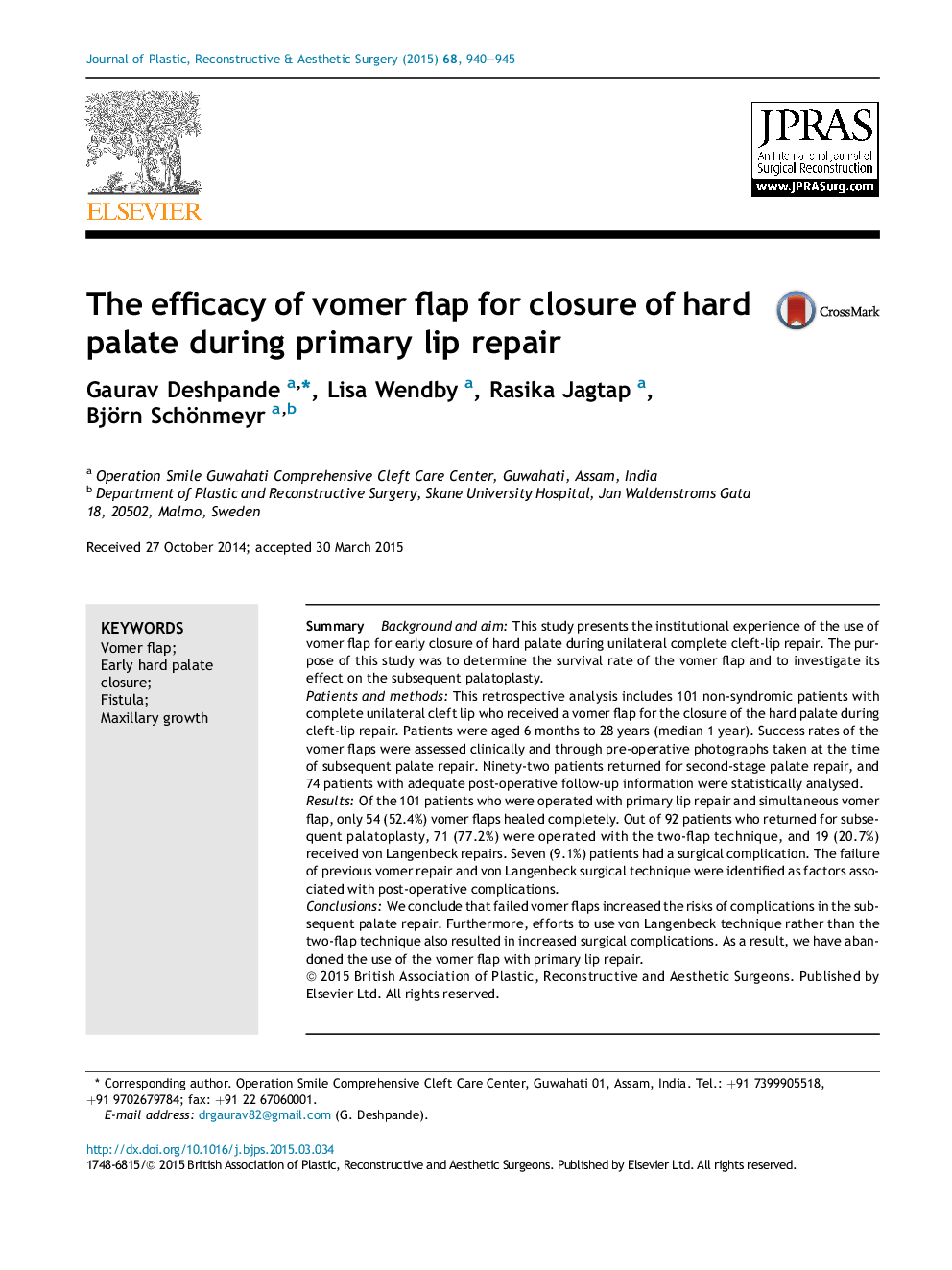| Article ID | Journal | Published Year | Pages | File Type |
|---|---|---|---|---|
| 4117248 | Journal of Plastic, Reconstructive & Aesthetic Surgery | 2015 | 6 Pages |
SummaryBackground and aimThis study presents the institutional experience of the use of vomer flap for early closure of hard palate during unilateral complete cleft-lip repair. The purpose of this study was to determine the survival rate of the vomer flap and to investigate its effect on the subsequent palatoplasty.Patients and methodsThis retrospective analysis includes 101 non-syndromic patients with complete unilateral cleft lip who received a vomer flap for the closure of the hard palate during cleft-lip repair. Patients were aged 6 months to 28 years (median 1 year). Success rates of the vomer flaps were assessed clinically and through pre-operative photographs taken at the time of subsequent palate repair. Ninety-two patients returned for second-stage palate repair, and 74 patients with adequate post-operative follow-up information were statistically analysed.ResultsOf the 101 patients who were operated with primary lip repair and simultaneous vomer flap, only 54 (52.4%) vomer flaps healed completely. Out of 92 patients who returned for subsequent palatoplasty, 71 (77.2%) were operated with the two-flap technique, and 19 (20.7%) received von Langenbeck repairs. Seven (9.1%) patients had a surgical complication. The failure of previous vomer repair and von Langenbeck surgical technique were identified as factors associated with post-operative complications.ConclusionsWe conclude that failed vomer flaps increased the risks of complications in the subsequent palate repair. Furthermore, efforts to use von Langenbeck technique rather than the two-flap technique also resulted in increased surgical complications. As a result, we have abandoned the use of the vomer flap with primary lip repair.
